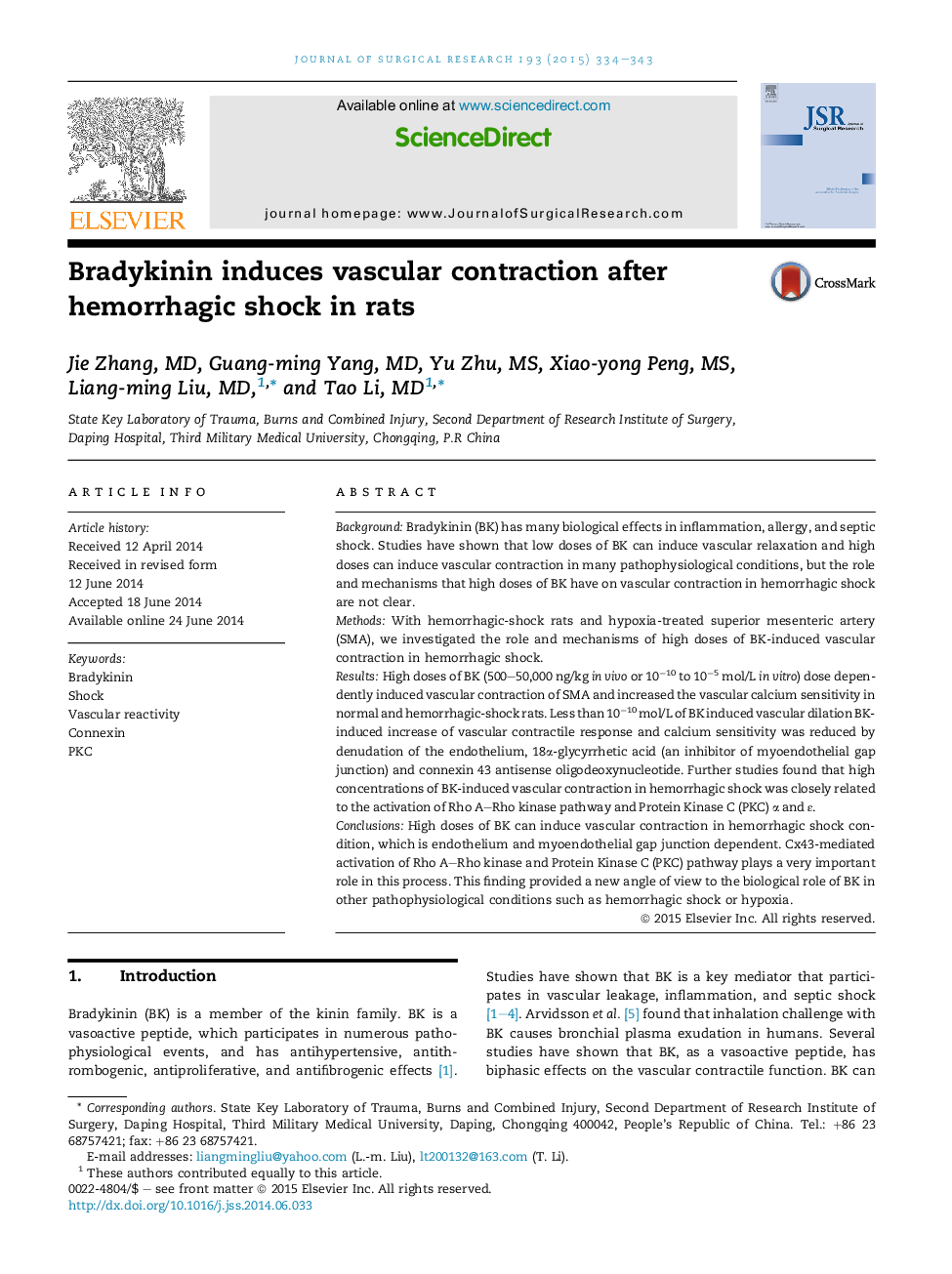| Article ID | Journal | Published Year | Pages | File Type |
|---|---|---|---|---|
| 6253763 | Journal of Surgical Research | 2015 | 10 Pages |
BackgroundBradykinin (BK) has many biological effects in inflammation, allergy, and septic shock. Studies have shown that low doses of BK can induce vascular relaxation and high doses can induce vascular contraction in many pathophysiological conditions, but the role and mechanisms that high doses of BK have on vascular contraction in hemorrhagic shock are not clear.MethodsWith hemorrhagic-shock rats and hypoxia-treated superior mesenteric artery (SMA), we investigated the role and mechanisms of high doses of BK-induced vascular contraction in hemorrhagic shock.ResultsHigh doses of BK (500-50,000 ng/kg in vivo or 10â10 to 10â5 mol/L in vitro) dose dependently induced vascular contraction of SMA and increased the vascular calcium sensitivity in normal and hemorrhagic-shock rats. Less than 10â10 mol/L of BK induced vascular dilation BK-induced increase of vascular contractile response and calcium sensitivity was reduced by denudation of the endothelium, 18α-glycyrrhetic acid (an inhibitor of myoendothelial gap junction) and connexin 43 antisense oligodeoxynucleotide. Further studies found that high concentrations of BK-induced vascular contraction in hemorrhagic shock was closely related to the activation of Rho A-Rho kinase pathway and Protein Kinase C (PKC) α and ε.ConclusionsHigh doses of BK can induce vascular contraction in hemorrhagic shock condition, which is endothelium and myoendothelial gap junction dependent. Cx43-mediated activation of Rho A-Rho kinase and Protein Kinase C (PKC) pathway plays a very important role in this process. This finding provided a new angle of view to the biological role of BK in other pathophysiological conditions such as hemorrhagic shock or hypoxia.
